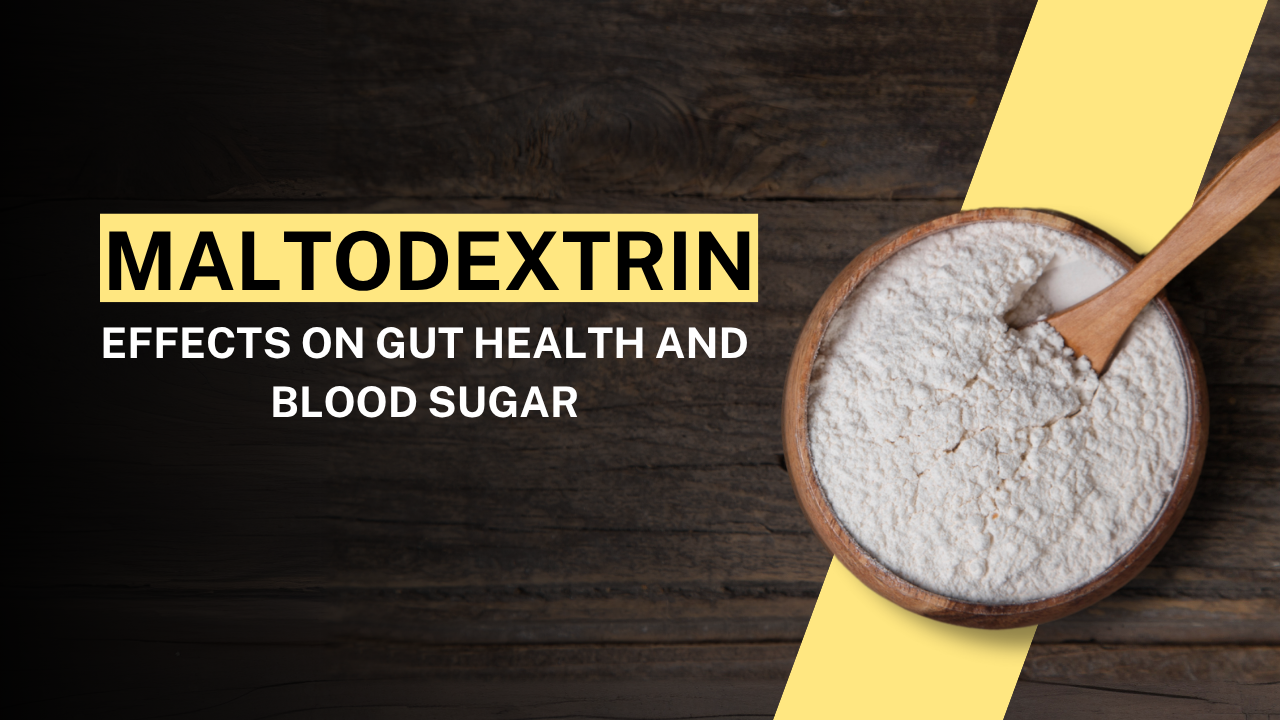Maltodextrin (MDX) is a common food additive derived from the breakdown of starch, often used as a thickener and filler in processed foods. It is widely found in a variety of products, including non-calorie sweeteners like Splenda, sports drinks, baked goods, and dietary supplements.
Despite its widespread use and the fact that it is generally regarded as safe (GRAS) by the U.S. Food and Drug Administration (FDA), recent research raises concerns about its potential negative effects on gut health and blood sugar levels. Studies have suggested that it may not be as inert as previously thought, with evidence pointing to its role in promoting intestinal inflammation and altering the gut microbiome.
A pivotal study demonstrated that MDX consumption could lead to intestinal injury and inflammation, potentially increasing the risk of chronic inflammatory diseases such as inflammatory bowel disease and metabolic syndrome. It also revealed that maltodextrin could deplete the protective mucus layer in the gut, further making intestinal inflammation worse. Another study found that MDX increases the susceptibility to colitis.
In the context of sports nutrition, the use of MDX in energy drinks for endurance sports has been associated with a lower risk of gastrointestinal distress compared to glucose or sucrose, due to maltodextrin’s lower osmolarity. However, this benefit must be weighed against its potential for promoting gut inflammation and weight gain in the long run.
Beyond its effects on gut health, MDX has also been shown to influence blood sugar levels. A study examining the impact of MDX consumption after a main meal found that it caused a transient increase in blood glucose levels in both individuals with Type 2 diabetes and non-diabetic patients.
In conclusion, while maltodextrin is widely used in the food industry and sports nutrition, emerging research suggests that its consumption may pose risks, particularly in promoting weight gain, chronic low-grade intestinal inflammation and altering blood sugar levels.
These findings also underscore the importance of reading food labels. Sometimes the amounts used in a product may be too small to cause any effect, specially in reduced sugar or sugar-free products. In such cases, the risk versus benefit ratio must be assessed before dismissing the product as “unhealthy”.
REFERENCES
Arnold AR, Chassaing B. Maltodextrin, Modern Stressor of the Intestinal Environment. Cellular and Molecular Gastroenterology and Hepatology, 2019;7(2):475-476.
Federica Laudisi et al. The Food Additive Maltodextrin Promotes Endoplasmic Reticulum Stress–Driven Mucus Depletion and Exacerbates Intestinal Inflammation. Cellular and Molecular Gastroenterology and Hepatology, 2019;7(2):457-473.
Rawan Almutairi et al. Validity of food additive maltodextrin as placebo and effects on human gut physiology: systematic review of placebo-controlled clinical trials. European Journal of Nutrition. 2022 Sep; 61(6): 2853–2871.
Hassan Darwish et al. Exploring the Metabolic Implications of Dextrin and Maltodextrin on Type 2 Diabetes Mellitus and Insulin Resistance: A Systematic Analysis (Part 1). Biotechnology Journal International, 2024.

